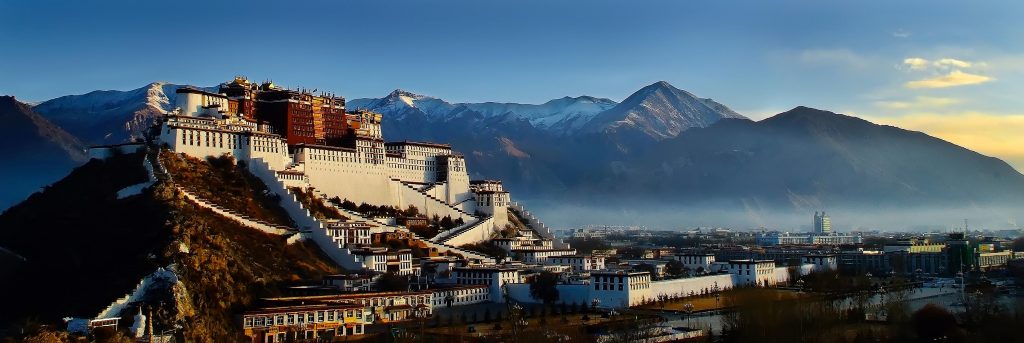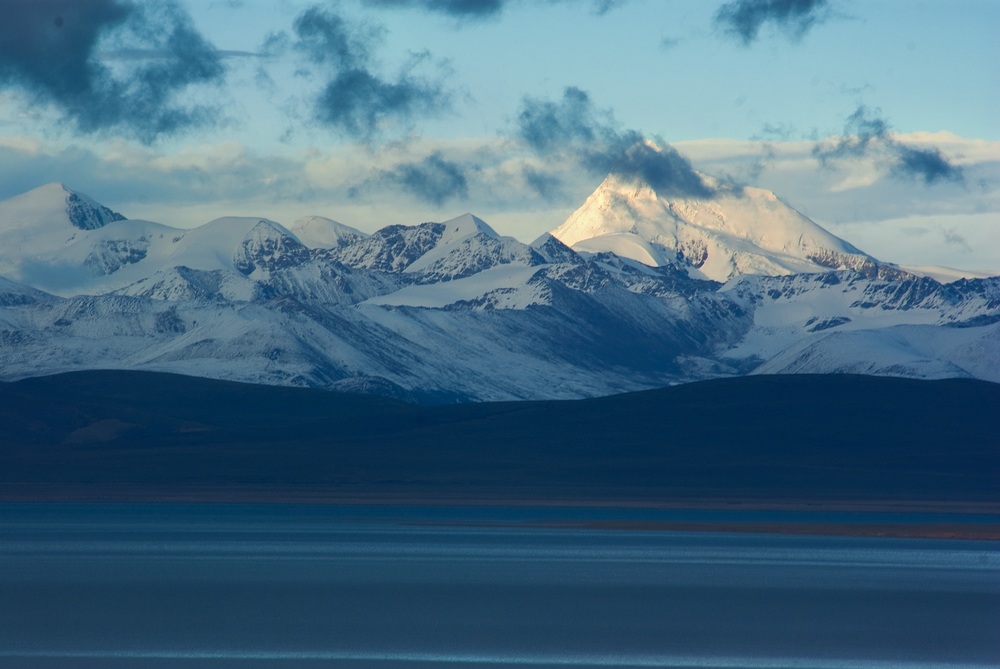The Meaning of “TIBET”: T – Touch, I – Inspire, B – Best, E – Eastern, T – Temple. Tibet in the eyes of a lot of people, is a beautiful and mysterious place. Known as the “roof of the world,” Tibet is one of the places which have the worst natural environment in the world. But that will not affect the attractiveness to its people. Every year, nearly a million people go into this mysterious land, to experience the soul shock that they never had before and feel the memories that remain unforgettable through out their lifetime.
Tibet lies on the Qinghai-Tibet Plateau of the southwest border of China. The average height of the whole region is more than 4,000 meters above sea level. The world’s lowest valley lies in east Tibet. Tibet is to the south of Xin Jiang Uygur Autonomous Region and Qing Hai Province, to the west of Sichuan, to the northwest of Yunnan and to the north of India and Nepal. Its population of 2.3 million people come from a variety of ethnic groups including Tibetan, Han, Monba. Its capital city is Lhasa.
As a part of China, Tibet has a unique culture of its own. It is mainly inhabited by Tibetans, a minority nationality of old and mysterious people. In Tibet, you will always be amazed by the artistic wonders,the architectures, the prayer-flags, sculptures and Thangkas, songs and dances, which are representation of the Tibetan cultures. Tibetan arts have gone through a history of 5000 years . The prehistoric art was closely bound up with the aboriginal Bon religion, while its later development relied greatly on the Tibetan Buddhist culture( Lamaism). Therefore, it has been imbued with strong ethnic and regional features.
In the Tibet of snowy region, one of the most exciting and attractive things is the traditional festival there. Almost every month there is one or two days being festival days, some of which are evolved from the folk custom activities. Such as The Tibetan Calendar New Year. The Tibetan calendar is one of the famous Astronomical Almanac of China. The Tibetan New Year usually begins in the first day of the lunar January and last for three or five days.The Tibetan lunar January15 is the Lantern Festival. This day was originally the day of the assembly; people do a lot of Ghee Lamp pilgrimage for Buddhist. Later, people add the lighthouse, lamp holder as well as butter sculptures to shape a variety of characters, flowers, birds and animals, for viewing.
How about the food in Tibet? Tibet’s traditional diet is Tibetan meal. It is natural for tourists to Tibet to appreciate it . Tibetan meal is a representative sample of burning sheep, beef, Zanba, buttered tea and highland barley wine. Tibetan meal tastes light ,reflecting the trend of “Return to Nature” in the culinary culture.
Maybe one of the most fascinating things about Tibet is its beautiful scenery .Following are the top ten famous tourist attractions of Tibet.
Top 1 Potala Palace 布达拉宫
The Potala Palace is considered to be a model of Tibetan architecture . In 641, Songtsan Gambo, ruler of the Tubo Kingdom, had the Potala Palace built for Princess Wencheng of the Tang Dynasty, his future bride.
Top 2 Mount Everest 珠穆朗玛峰
As the supreme point of the world, the mountain top is covered with snow all the year round , and when the glaring sun comes out, the peak becomes very pure and beautiful.
Top 3 Jokhang Temple 大昭寺
Jokhang Temple, located on Barkhor Square in Lhasa, is Tibet’s first Buddhist temple and is part of the Potala Palace. It is the ultimate pilgrimage destination for Tibetan pilgrims.
Top 4 Namtso Lake 纳木措
Namtso, or Lake Nam, is one of the three holy lakes in Tibet Autonomous Region and should not be missed by any traveler to Tibet. In Tibetan, Namtso means “Heavenly Lake.” It is famous for its high altitude and imposing scenery.
Top 5 Yarlung Zangbo Grand Canyon 雅鲁藏布大峡谷
The Yarlung Zangbo Grand Canyon is one of the deepest and longest canyons in the world. The canyon is home to many animals and plants barely explored and affected by human influence, while its climate ranges from subtropical to Arctic.
Top 6 Former site of Guge 古格王国
Guge was an ancient kingdom founded by a branch of descendents of the last king of a unified Tibet in the 10th century. It flourished for more than 700 years before encountering civil strife and foreign attacks and falling into disrepair. Now, visitors can see its ruins of temples and palaces, whose inscriptions, statues and murals still remain intact.
Top 7 Midui Glacier 米堆冰川
Midui Glacier, located in Yupu Township, is the lowest altitude above sea level in the world. It was ranked by China National Geography Magazine as one of the top six most beautiful glaciers in China.The glacier passes through four distinct regions: snow-capped mountains, forests, lakes , villages and temples. It looks as if Nature’s hand itself had taken up a brush to paint a splashed-ink landscape.
Top 8 Tashilhunpo Monastery 扎什伦布寺
Tashilhunpo Monastery, founded in 1447 by the First Dalai Lama, is one of the Big Six Monasteries of the Gelug sect of Buddhism in Tibet.
Top 9 Barkhor 八廓
The streets are full of religious atmosphere and show the original Lhasa. Shops offer prayer wheels, traditional Tibetan clothing, Tibetan knives and religious articles for sale.
Top 10 Yambajan 羊八井
Yambajan is famous for its wide range of hot springs, from ones with the highest temperatures in the country to boiling geysers. The hot springs in Yambajan contain various minerals and are believed to be therapeutic.
The landscape of Tibet is diverse. There is desolate plateau, the vast expanse of the field, There are dense forests, also towering snow-capped mountains.
There is peculiar temple, beautiful mural, devout believers Traveling in Tibet, people only limited in time , not in space.
shrine in snowland,
heaven on earth Tibet—home for your soul!
If you’ve decided to travel,then go to Tibet! You’ll find it the most correct decision you’ve made!











